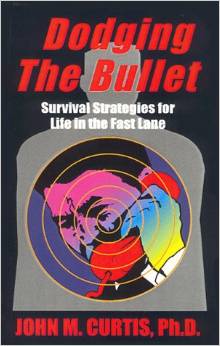Adding a new mystery to 45-year-old Tiger Woods’ Feb. 23 rollover accident in Palos Verdes, Rolling Hillls Estates, the 15-times major champion claims he can’t remember his accident, or, even driving on that fateful day. Woods continues his recovery from surgical repairs of his right leg, ankle and foot that could keep him from playing professional golf. An unnamed witness, who rushed to the accident scene before the Los Angeles Sheriff arrived, said he found Woods unconscious, non-responsive at the time he approached the demolished vehicle lying on its side. When first Sheriff deputy Carlos Gonzales arrived at the scene around 7:20 AM, Woods appeared in shock but was conscious and answered basic questions despite not recalling the accident or whether he was driving. Woods told Gonzales, paramedics and Harbor-UCLA hospital personnel he had no recollection of the crash.
Filing the witness statement that Tiger was unconscious, the Sheriff’s Department filed for a search warrant of the wrecked Hyundai Genesis GV80 SUV courtesy vehicle Tiger drove on the day of the accident. Sheriff investigators want to examine the black box that may contain data which could shed some light on the speed of the vehicle at the time of the crash. “I believe the data will explain how/why the collision occurred,” Los Angeles Sheriff Deputy Johann Schloegi wrote in an affidavit to the court. Schloegi said he did not seek a toxicology report on blood samples on the day of the crash. “LASD is not releasing any further information at this time,” said Sheriff’s spokesman Shawn Du Busky in a statement. “The traffic collision investigation is ongoing and traffic investigators continue to work to determine the cause of the collision,” leaving many unanswered questions.
Discrepancies in the initial reports of the unnamed neighbor who approached the crash site before Sheriff Deputy Gonzalez arrived said the vehicle occupant was unconscious and not responding to prompting. Gonzalez certified on his arrival that Mr. Woods looked like he was in shock but could answer simple questions, despite saying he had no recollection of the crash or even driving. Examining the research on car crashes without head injuries, it’s unclear whether the sheer force of the collision could cause what’s known as retrograde amnesia. Retrograde amnesia usually occurs after a blow to the head, where all memory after the blow seems vaporized. Tiger’s inability to recall the collision or whether or not he was driving suggests retrograde amnesia. Bit a neurologist specialized in memory impairment from car accidents needs to fill in the gaps in Tiger’s failure to recall the event.
If neither a blow to the head or a forceful impact of the crash caused the amnesia, then there are only so many scientific explanations left, including that Tiger’s lying about not recalling the incident. Granting a subpoena for the car-data-recorder, LASD investigators hope to get another piece of the puzzle. On the day the crash took place, Sheriff Alex Villanueva said that his department would not be seek a criminal complaint, calling the crash an accident. Judging by the request for the black box, it looks like LASD detectives are trying to ascertain whether Tiger was speeding down Hawthorne Blvd. before he crashed and rolled over. Detectives are also looking at cell phone records to see whether he was talking on his cell phone at the time to the crash. Talking on a cell phone gets more tricky when cars are set up with blue tooth capability, the legal way talking while driving.
Solving the riddle of how Tiger developed retrograde amnesia following the crash, Zuckerberg San Francisco General Hospital trauma surgeon Dr. Andre Campbell said it was possible for Tiger to black out without a blow to the head. “A lot of time people will tell you, ‘I don’t remember what happened,’” said Campbell. Campbell said, in his experience, major car crashes can cause a loss of consciousness or experience memory lapses due to the force of the crash. “This is a credit to modern engineering, really, that he’s alive,” Campbell said, referring to how the SUV’s airbags deployed giving Tiger a lifesaving cushion against the impact. Most neurosurgeons study retrograde amnesia from a blow to the head, where everything after the injury goes amnesic for short time after the incident. In Tiger’s case, Campbell suggests that the force of the crash could’ve caused Tiger to black out.
Tigers Feb. 23 accidents comes shortly after his last back surgery that was supposed to prepare him for the April 5 Augusta, Ga. Master’s Gold tournament. With his compound leg, ankle and foot fractures, no one’s willing to speculate about a return to professional golf. Tiger’s been through a high profile divorce with his Ellen Nordegren Aug. 30, 2010, where he made headlines when he crashed his Cadillac Escalade, watching Nordregen smash his back window with a golf club when she found out about his extramarital affairs. For the past 11 years Tiger’s career was a roller coaster, finally breaking through at the April 14, 2019 Masters. Whatever happens with Tiger’s rehab, he has an enormous following praying for his past glory, that had him winning his first Master’s green jacket April 13, 1997 at age 21 by an unprecedented 12 strokes, obliterating golf’s longstanding color barrier.



